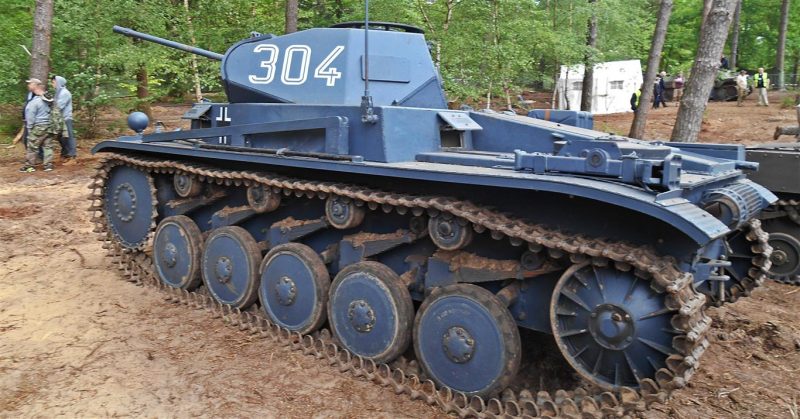The Oorlogsmuseum Overloon is an impressive Dutch war museum that concentrates on the history of the Second World War in the Netherlands and operation Market Garden. Located in the Dutch town of Overloon, this museum was founded by merging the National War – and Resistance Museum (“Nationaal oorlogs – en Verzetmuseum”) and the exhaustive vehicle collection of the Marshal Museum which included more than 200 military vehicles.
This collection includes some of the most symbolic vehicles of the war such as the British Spitfire, a running Russian T34/85 and an American twin-engine B25 Mitchel bomber. Next to its impressive display of World War II weaponry, the museum also hosts very modern and interactive exhibitions about more complex aspects of the war such as the aerial bombing, the resistance, and the Holocaust.
The museum is enclosed by a large forest with muddy roads through which vehicles can drive during the occasional events.
Militracks
Militracks is a yearly outdoor event hosted on the museum grounds. This event displays German military vehicles from the Second World War. The event prides itself on being the biggest gathering of German World War II vehicles, a statement which is surely not exaggerated. From all over Europe private collectors and museums gather to Overloon to display their surviving – and often still running – historic German vehicles.
Don’t expect a static show here, most of the vehicles will be hot and running for most of the day, sputtering across small roads through the Overloon forest. Militracks offers visitors a once in a lifetime chance to have a ride on one of these fascinating vehicles. Driving is out of the question of course, but the extensive experiences on offer – wheeled vehicles, Kettenkrads, half tracks and the occasional tank or tank destroyer – is unique.
The bulk of these vehicles are owned by private collectors, who travel far distances to display their vehicles and share knowledge with other vehicle enthusiasts. The host of the event, the Oorlogsmuseum Overloon itself, also features some of its running vehicles. As the event has been growing over the last years, cooperation with other military museums has improved, resulting in occasional guests such as the Panzer II from the French Saumur Tank Museum this year.
Only some of the vehicles are on static display, the largest part will be touring around the forest road. For a small price, visitors can buy a seat in their vehicle of preference and have a ride through the forest. The number of attending vehicles is impressive and offers a unique view on how German military engineering evolved during the war.
On the other side of the museum, a large militaria market can be found. A wide array of stalls have for sale everything a military history enthusiast desires, from books and model kits to army uniforms, memorabilia and even spare vehicle parts.
Some of the vehicles on display:
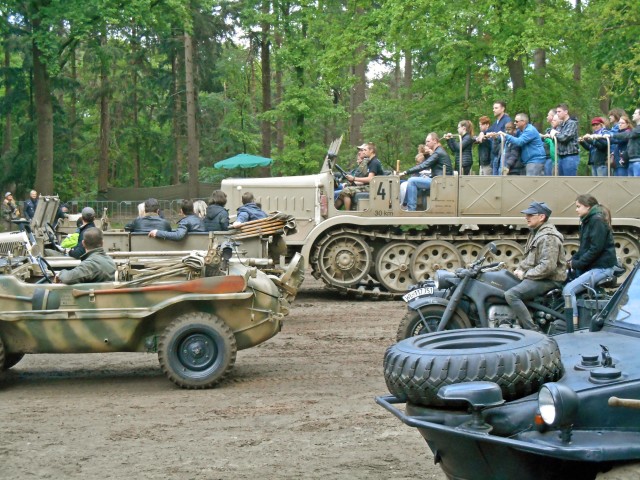
Next to the impressive tanks – which, due to maintenance demands, only drive a set number of laps each day – the most popular vehicle is probably the unique German Sd Kfz 2 Kettenkrad. This partly tracked motorcycle/tractor is an interesting sight, plowing through the muddy roads.
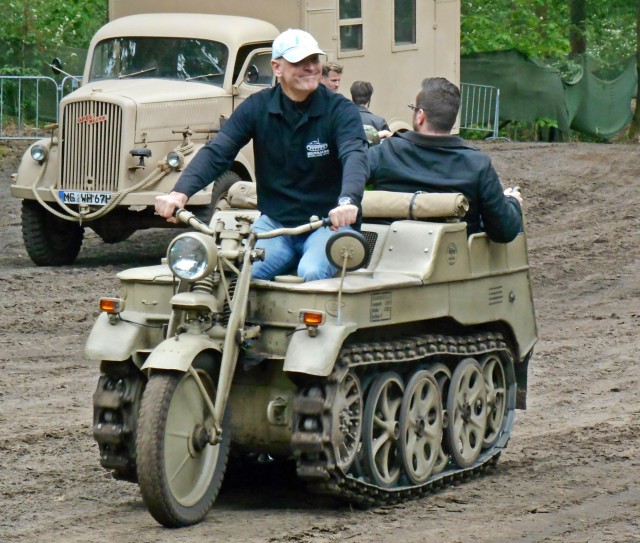
The Sd Kfz 2 Kettenkrad was developed as a light tractor for the German Falschirmjaeger. German command demanded a vehicle small enough to fit inside the hull of the Junkers 52 plane, through which it would be delivered to the front lines. A total of 8,345 vehicles were produced. Most of them served on the Eastern front where they were used to tow loads and lay communication cables through the rough Russian terrain.
Later during the war, these vehicles were used to taxi jet airplanes to the runway to save fuel. After the war, another 550 Kettenkrad were produced by NSU Werke AG to be used for agricultural purposes.
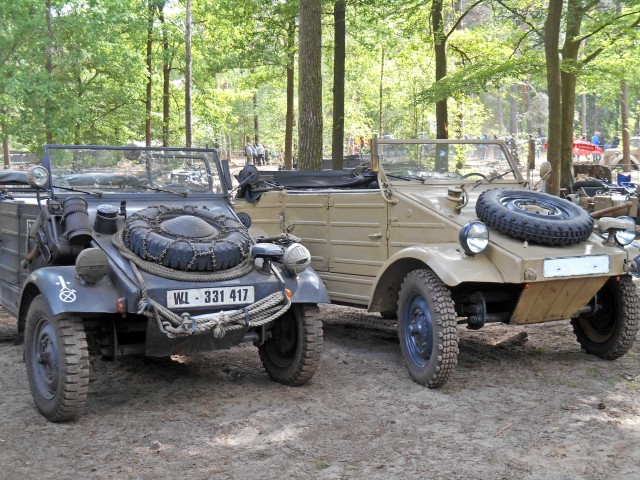
Another well-known vehicle was equally well represented at Militracks is the German counterpart of the Willy’s jeep: The Volkswagen Typ 82 Kübelwagen.
This car was based on the predecessor of the famous Volkswagen Beetle. The type 82 was the last mass produced model of the Kübelwagen, and around 55,000 were produced (600,000 American Jeeps were built). In comparison to the Jeep, which had four-wheel drive, the Kübelwagen lacked performance in rough terrain due to its rear-wheel drive.
During the course of the war, German engineering improved the engine power of the vehicle. Plans to make a four-wheel drive vehicle were dropped in favor of the Schwimwagen.
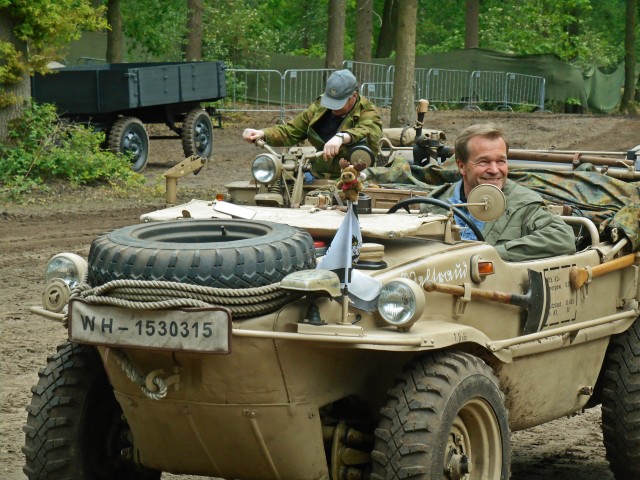
The amphibious Volkswagen Type 166 Schwimwagen. With a total of 14,265 vehicles built, the type 166 Schwimwagen is the most produced amphibious car in history.
As a command car or scouting vehicle, the Schwimwagen had excellent cross country performance due to its 4×4 drive. By lowering a screw propeller from the rear deck engine cover, it could drive through water.
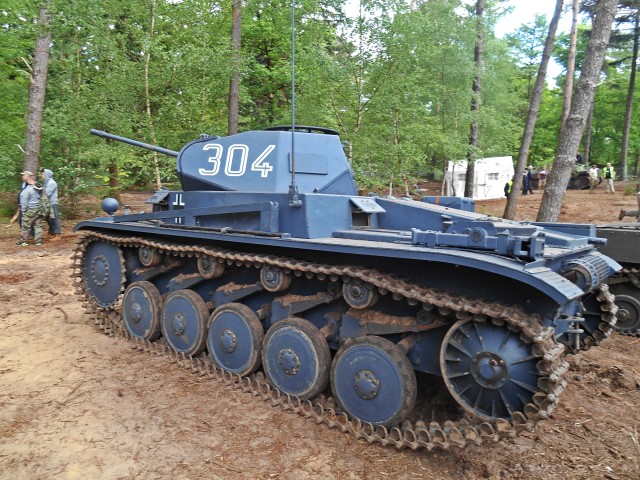
A special guest from the French Tank Museum at Saumur: the Panzer II. This light tank formed the bulk of German armoured forces during the opening days of the Second World War.
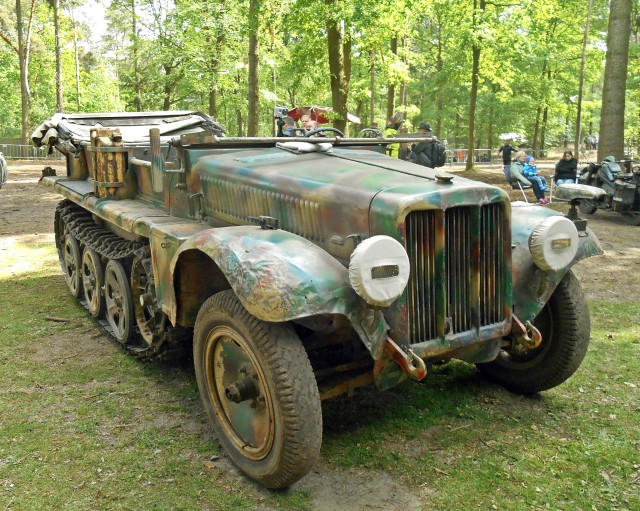
The 5 ton Sd Kfz 10. This half track saw widespread use on all fronts during World War II. In addition to towing artillery guns or trailers, it could carry eight troops.
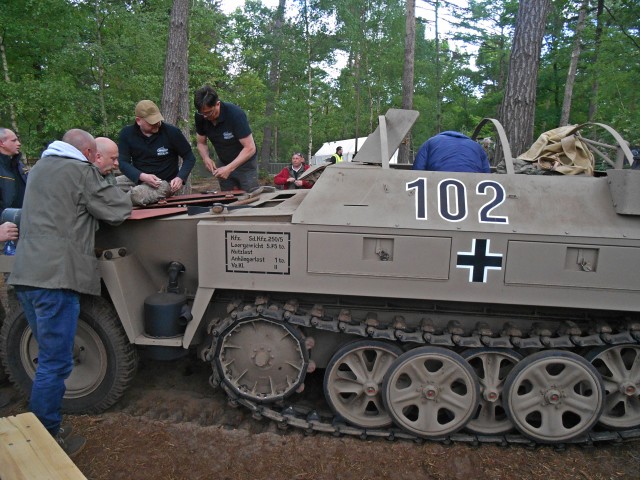
Maintenance works on a Sd Kfz 250 light half-track. This vehicle first appeared on the front lines during the invasion of France in 1940. It was designed to carry a platoon of five soldiers for supporting reconnaissance missions. Fifteen different variants of this vehicle were built such as a mobile gun carrier, a mortar vehicle, and munitions carrier.
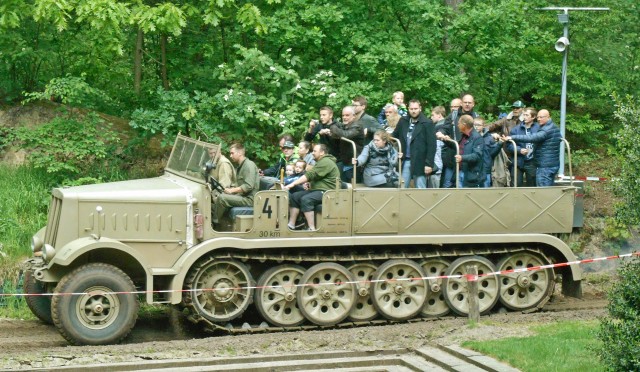
The impressive Sd Kfz 9 half track. Weighing slightly over 18 tons, this 9.3-meter long vehicle was the largest half track fielded be the Germans. Designed for pulling heavy vehicles, this vehicle could pull loads up to 25 tons and was also used for different purposes by pioneer troops.
In 1940, 15 of these vehicles were modified as a heavy mobile gun platform. They were fitted with an 8.8cm Flak 18 gun to provide mobile anti-aircraft fire and bombard enemy positions.
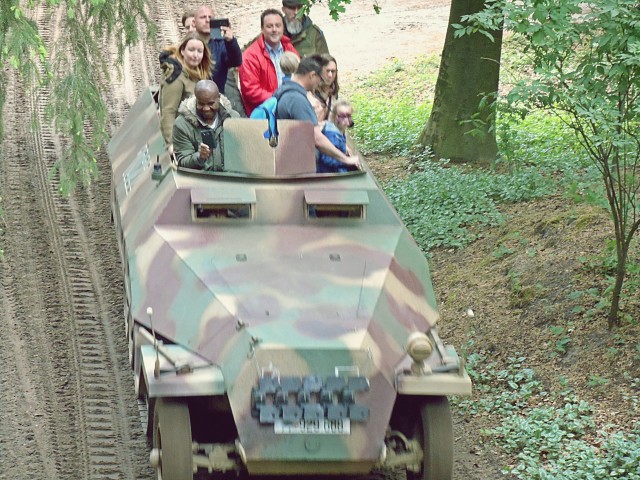
A fully loaded half-track passes by. This is the Sd Kfz 251, an iconic German World War II vehicle. It was the most-produced German armoured vehicle, was built in four versions (A, B, C and D). Production lasted from 1939 until the end of World War II.
This armored troop carrier weighed almost eight tons and could carry a full platoon of ten soldiers as well as the two-man crew. With this sturdy vehicle, German panzer grenadiers were able to follow the quick advance of their tanks and provide fire support. The Sd Kfz 251 proved to be a very suitable basis for modifications, a total of 22 different variants appeared on this model.
While most of them consisted of changes in the armaments, there were also ambulance and observation modifications. The Sd Kfz 251/1 “Stuka zu fuss” (Stuka on foot) proved to be one of the most dangerous modifications; this version could launch 28cm or 32cm rockets from its sides to provide heavy fire support.
As Skoda was one of the main producers of these vehicles, production of the Sd Kfz 251, renamed as OT-810, continued after the war in Czechoslovakia where it served in the army up until 1980.
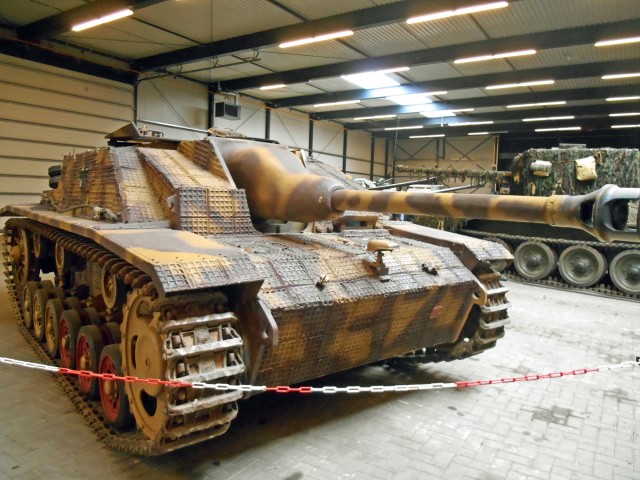
Another special guest during Militracks: the Sturmgeschütz III. This assault gun, built on the chassis of the Panzer III tank, was the most-produced German armored fighting vehicle during World War II. While it was initially developed as an armored assault gun for infantry support, battle conditions caused it to be used as a tank-destroyer after the high-velocity 7.5cm Stuk 40 L/48 gun was mounted.
The vehicle in this picture provides a good view of Zimmerit coating layer. While this Stug looks like it has been through a waffle iron, this special paste was applied to German vehicles to prevent magnetic mines and sticky bombs from being attached.
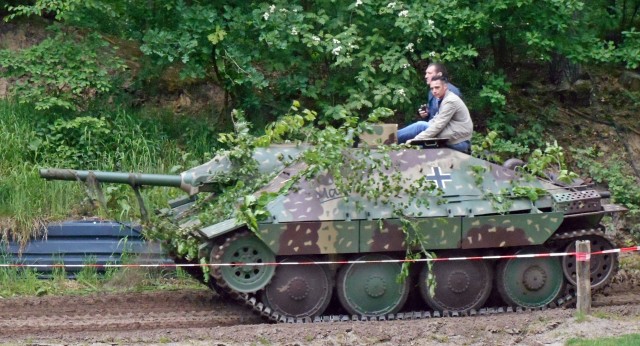
The Jagdpanzer 38 “Hetzer” was built on the chassis of the Skoda Panzerkampfwagen 38(t) as a reliable, cheap and easily produced tank destroyer. It featured sloped armor on all sides, and the 7.5 cm gun packed a decent punch.
The vehicle weighed around 16 tons and due to its small size, was easily concealed and very suitable to be used in ambushes. In November 1944, some vehicles were fit with a flamethrower, designated “Flammpanzer 38.”
After the war, Czechoslovakia continued to produce around 180 jagdpanzer 38s. 158 of these vehicles, known as the G-13, were exported for use by the Swiss army.
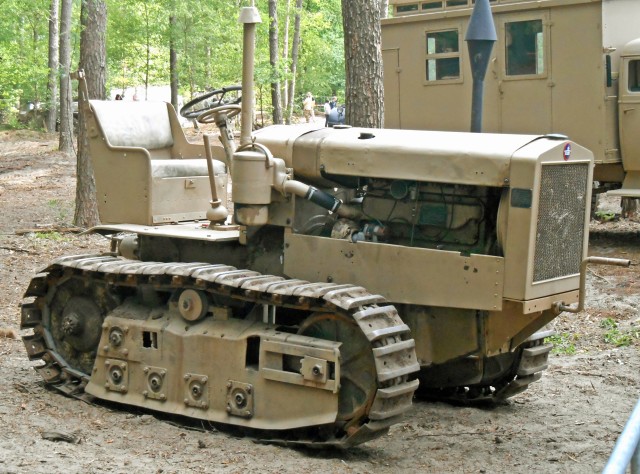
The Famo Boxer. This German tractor was used for towing heavy loads such as construction machines and airplanes.
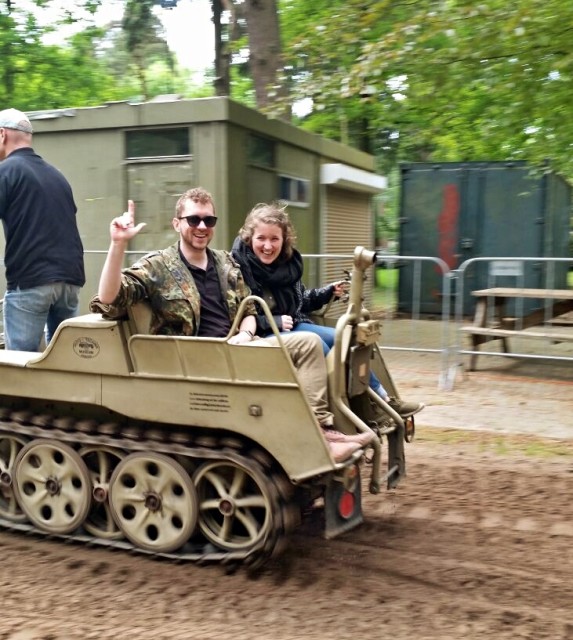
Written by Robby Houben for War History Online
